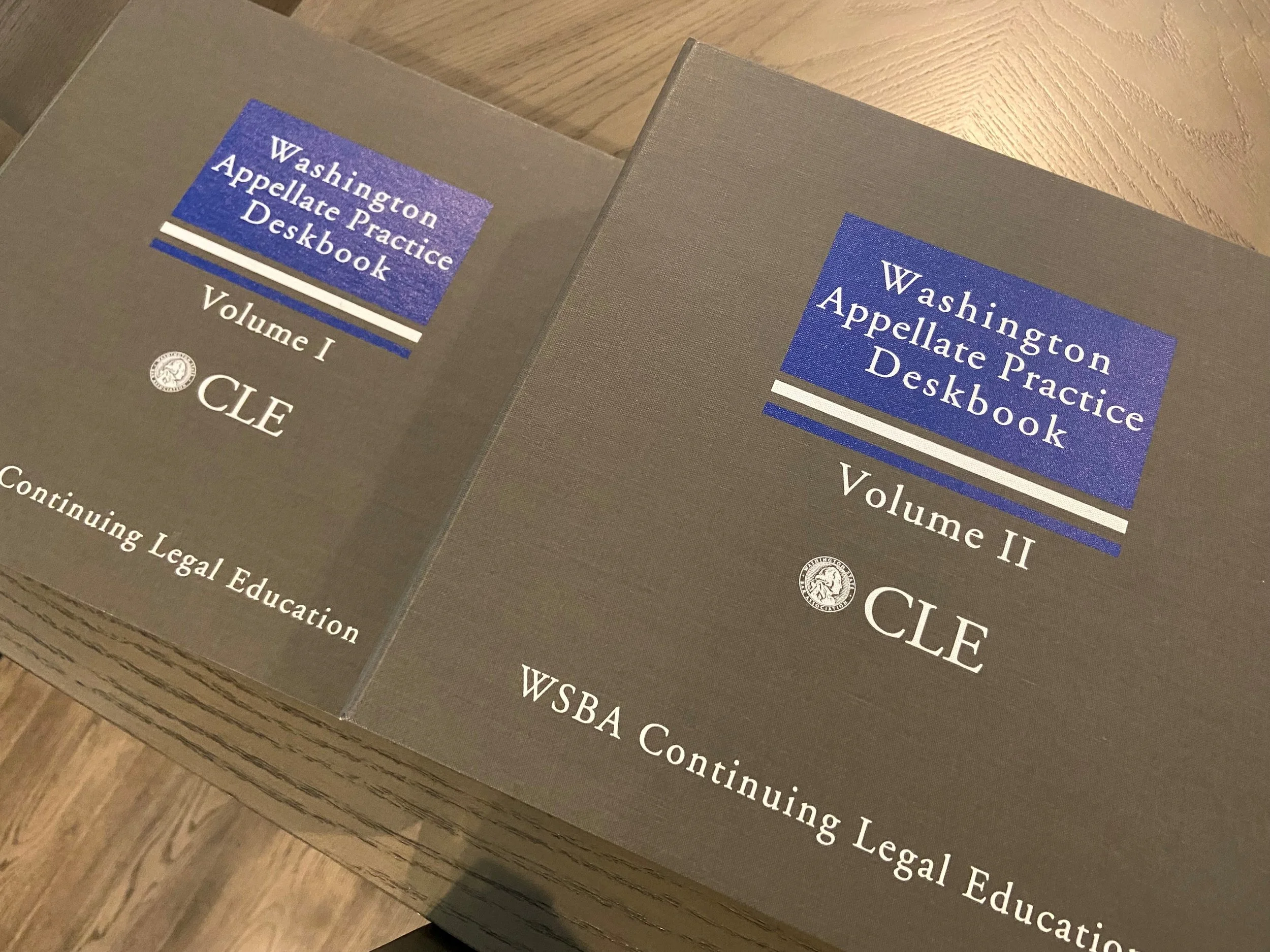A case only an appellate nerd could love
Last week, on June 2, 2022, the Washington Supreme Court—maybe for the first time ever—weighed in on the factors appellate courts use to decide whether to accept interlocutory review. Appellate procedure nerds, this case is for you!
Under the Washington Rules of Appellate Procedure (RAP), our appellate courts can (but do not have to) accept interlocutory review (called “discretionary review” in our parlance) of a lower court ruling in only four instances:
The superior court has committed an obvious error which would render further proceedings useless;
The superior court has committed probable error and the decision of the superior court substantially alters the status quo or substantially limits the freedom of a party to act;
The superior court has so far departed from the accepted and usual course of judicial proceedings, or so far sanctioned such a departure by an inferior court or administrative agency, as to call for review by the appellate court; or
The superior court has certified, or that all parties to the litigation have stipulated, that the order involves a controlling question of law as to which there is substantial ground for a difference of opinion and that immediate review of the order may materially advance the ultimate termination of the litigation.
RAP 2.3(b).
The first two circumstances are the ones at issue in this case. For decades, since writs were abolished and these rules were put into place, lawyers have scratched their head and wondered what the practical difference is between RAP 2.3(b)(1) and (b)(2)? And more specifically, what does the “substantially alters the status quo or substantially limits the freedom of a party to act” portion of RAP 2.3(b)(2) mean?
We’ve had a few Court of Appeals opinions try to clarify what the language means. There have been a couple important scholarly articles that have been written on this issue that are regularly cited. But I think this marks the first time the Supreme Court has weighed in.
Why on earth hasn’t the Supreme Court already weighed in on these factors, you ask? This is largely due to the fact that under our system, court commissioners make the decisions about motions seeking interlocutory review, called motions for discretionary review. Those decisions are written but not published and are not, for the most part, collected by legal research providers. If a Commissioner denies a motion for discretionary review, the losing party can ask for reconsideration in the form of a motion to modify the Commissioner’s ruling, which goes to a panel of judges. But again, those decisions are rarely published. It is only then if the losing litigant seeks discretionary review of the denial at the Supreme Court—and the Supreme Court agrees to hear the case—would we then get some sort of published opinion. That just does not happen. Until now, that is!
One of the few Court of Appeals’ decisions to decide what “substantially alters the status quo” means adopted the interpretation that discretionary review is available only “if the decision has an immediate effect outside the courtroom and does not merely alter the status of the litigation itself.” In re Dependency of N.G., No 100008-1, slip op. at 1 (Wash. June 2, 2022) (internal quotations, alterations, and citations omitted).
Court rules are interpreted the same way statutes are. Under our plain meaning analysis, courts look to not only the language of the particular rule at issue, but also the greater context of related rules. The Supreme Court, after examining the language of the court rule and other related rules, adopted that same limitation that “substantially alters the status quo” means substantially alters the effect outside the courtroom. This conclusion results from the structure of the rule, the necessity that RAP 2.3(b)(2) must mean something different from RAP 2.3(b)(1), and the courts general aversion to interlocutory review.
For example, the court pointed to (b)(1) which requires a higher certainty of error (“obvious”), but less rigorous showing of harm. On the other hand (b)(2) has a lesser certainty of error (“probable,” which is less than “obvious”), but a higher standard of harm. To prevent RAP 2.3(b)(1) from being subsumed into RAP 2.3(b)(2) (or vice versa), rendering RAP 2.3(b)(1) meaningless, the court adopted the higher level of showing of impact on the litigants. Otherwise, it becomes very difficult to differentiate between (b)(1) and (b)(2). And what lawyer would opt for the standard that required a higher level of proof of error (obvious error) in (b)(1) when (b)(2) has a lower standard of error and there is no difference in showing of the impact of the error?
The court went on to apply the analysis to this case, holding that even though the lower court committed “probable error,” it did not substantially alter the status quo because nothing changed outside the courtroom. Which is the ultimate outcome in so many motions for discretionary review.
Washington’s definitive guide to appellate procedure, the Washington Appellate Practice Deskbook.

